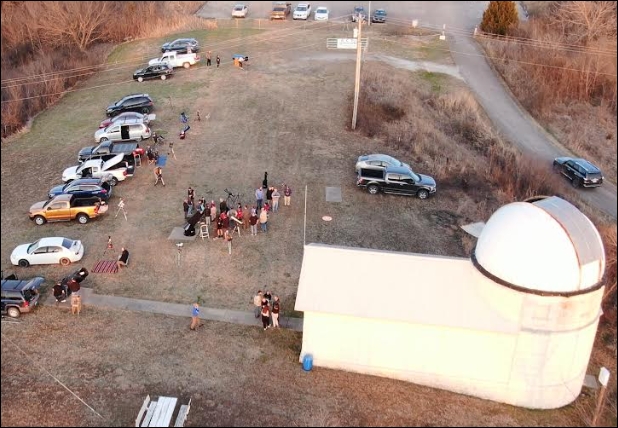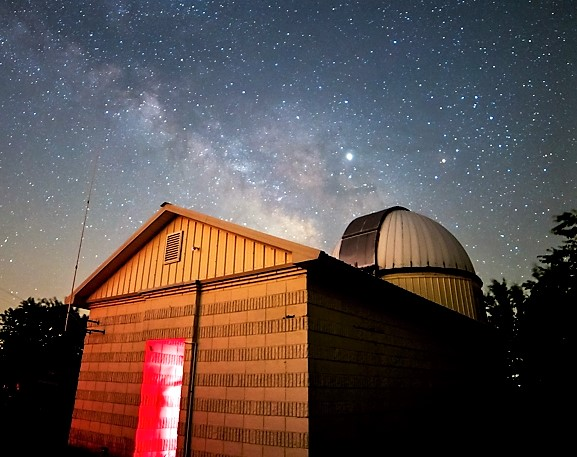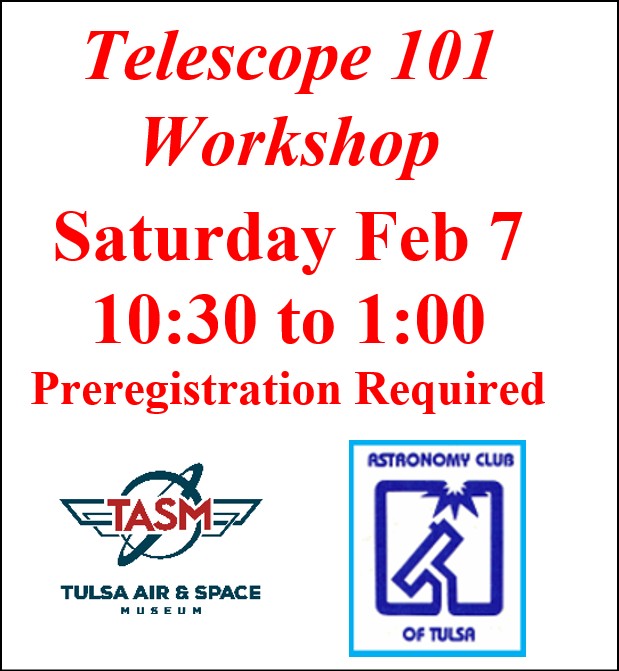The Planets
In this lesson you will learn about the nine planets in the solar system and how they move through the nighttime sky. This lesson does not go into details about each planet because there is a section about the planets located in the Info Center of the Web site. What this lesson does cover is where the planets are in the sky and when is the best time to see them. The orders of the planets are Mercury, Venus, Earth, Mars, Jupiter, Saturn, Uranus, Neptune, and Pluto.
Lets talk about some terms I will use first.
A conjunction is when any two objects in the sky are very close together. When a planet is in conjunction with the sun, you would not be able to see that planet at night.
An opposition is when a planet is opposite the sun. A full moon would be a good example of an opposition with the sun. A full moon occurs when the sun sets at the same time that the moon rises because it is opposite the sun.
Retrograde for a planet occurs when opposition is near. Everything in the sky moves east to west for a given day. But the moon, sun, and planets move west to east over a long period of time. You can see this with the moon because it is so close. Just watch the moon move against the background stars for 5 nights in a row. A planet begins to move backward in a westward direction instead of eastward, this is called retrograde. After opposition occurs, the planet changes direction back to normal.
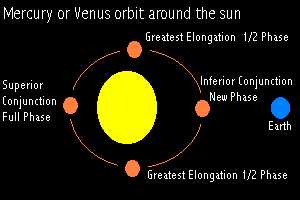
Now that we have some of the terms defined, let me cover the two inner planets - Mercury and Venus. These planets can never have an opposition because they orbit the sun closer than the earth does. They do have three types of conjunctions with the sun. A superior conjunction occurs when the sun is between the earth and the planet. An inferior conjunction occurs when the planet is between the earth and the sun. A rare event occurs called a solar transit meaning that the planet is in inferior conjunction and crossing the sun's disk. This must be a perfect alignment of the earth, sun, and Mercury or Venus. (See Info Center for more information about solar transits.)
So when is the best time to see Mercury or Venus in the sky? Since Mercury is close to the sun, it is never very far away from it. The best time to see Mercury is just before sunrise or just after sunset. There are usually two times a year that conditions are good to see Mercury in total darkness. When Mercury or Venus is at greatest elongation, then the planet is as far away as it can get at that time. The diagram shows the positions which Mercury or Venus can be in.
Venus is farther away from the sun and can be seen higher in the sky at night. When Venus is at its greatest elongation, you can see Venus in the sky three hours before sunrise or after sunset. Both planets show phases in a telescope. When the planet is in superior conjunction, it is in a full phase and is very small in angular diameter. As Mercury or Venus moves around the sun, the phase becomes half phase and then crescent as it approaches inferior conjunction. The planet also grows in size as it gets close to earth.
Project:
You can build your own solar system for a school project. The materials are easy to get and it is fun to do. Go down to your local arts and crafts store and pick up some round Styrofoam balls. You will need to determine what sizes to get. Look up the information on each planet in Astronomy Information section of this Web site. There you will find information on the planets and see what your weight and age would be if you lived on that planet. Once you have the sizes you need, get some paint to add the correct color to them. Once they are dry, you can hang them up or mount them some other way.
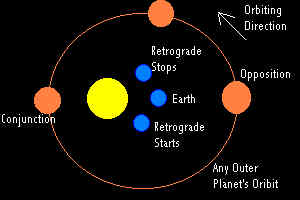
Now I will shift to the outer planets Mars, Jupiter, Saturn, Uranus, Neptune, and Pluto. These planets cannot have inferior conjunction because their orbits are farther than earth's. They do have superior conjunction with the sun, but since this is the only type of conjunction the planet can have, it is simply called a conjunction. The other planets also have oppositions once a year except Mars. Because Mars' orbit is closer to earth than the others, its opposition occurs every two years. These planets don't really have a phase seen from earth so you would never see Jupiter in a crescent phase. As these other planets approach opposition, they begin their retrograde motion backward in the sky. This is because the earth is catching up with the planet as it orbits the sun. When the earth is at opposition with the planet, it is half way done retrograding. After opposition, we get far enough away and the retrograde motion stops. All the outer planets do this but Mars is the easiest to see. Next time Mars approaches opposition, watch it every three nights and you can see this movement.
You do not need a telescope to see Mercury, Venus, Mars, Jupiter, and Saturn but you do for Uranus, Neptune, and Pluto. All the planets, sun, and moon follow a path in the sky known as the ecliptic. The ecliptic consists of 13 constellations also known as the signs of the zodiac. Astrology was built using 12 of the constellations 2,000 years ago. Because the earth wobbles like a top in a 26,000-year period, there are now 13 constellations that the sun, moon, and planets move through. So if your sign is a Virgo, then you are really a Libra using today's stars. I suspect astrology will have to be revised or dropped in the next 2,000 years because it gets worst as time goes on. Anyway, the planets move along this path because that is where the solar system's orbital plane exits.
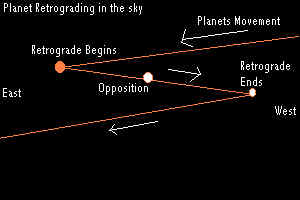
The planets are easy to find in the sky. Every month this Web site and others give you information where the planets are at and when you can see them. Remember that Mercury and Venus are always near the western horizon after sunset or in the east before sunrise. The other planets can be seen any where in the sky along the ecliptic. The best time to see Mercury or Venus is at greatest elongation and the other planets at opposition. You can also pick up a copy of Sky & Telescope or Astronomy Magazine for details about the planets in the solar system.


